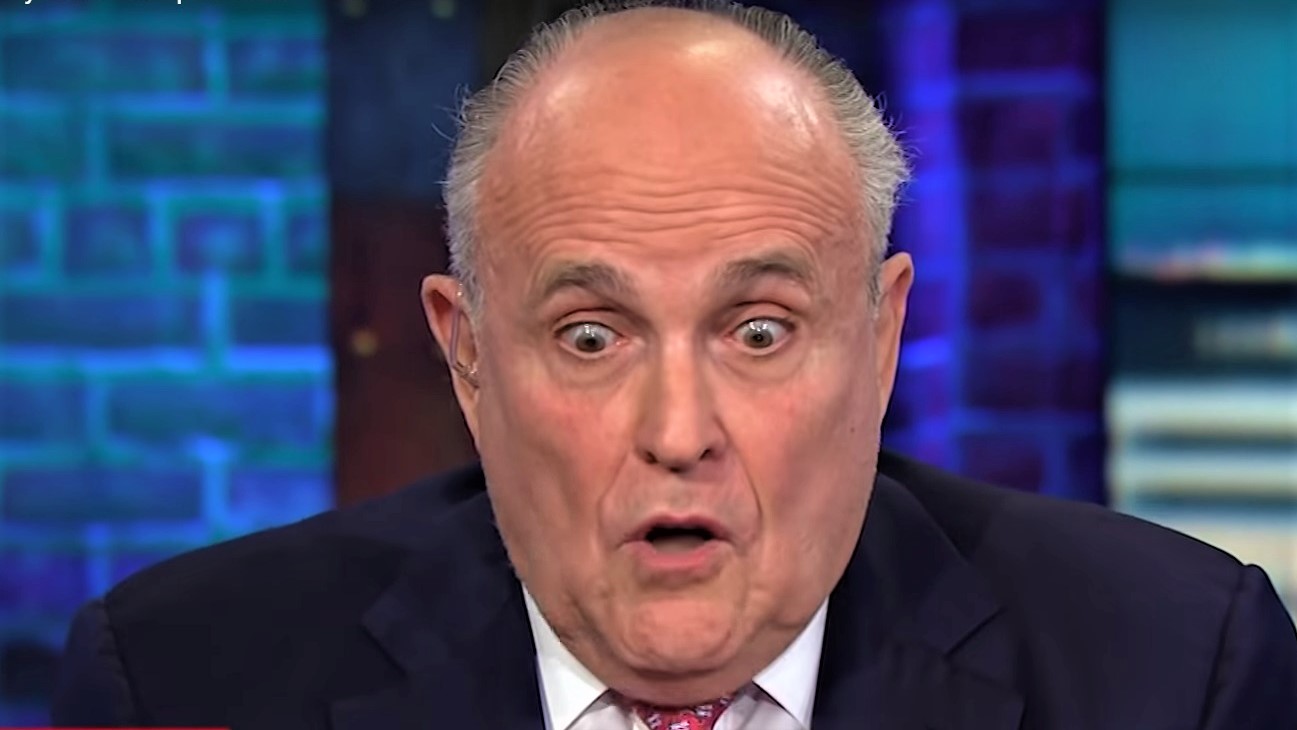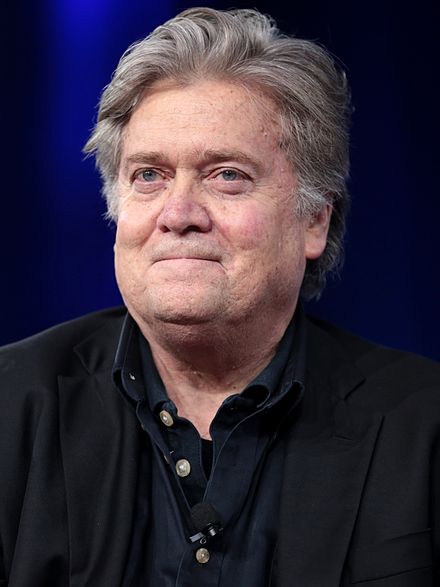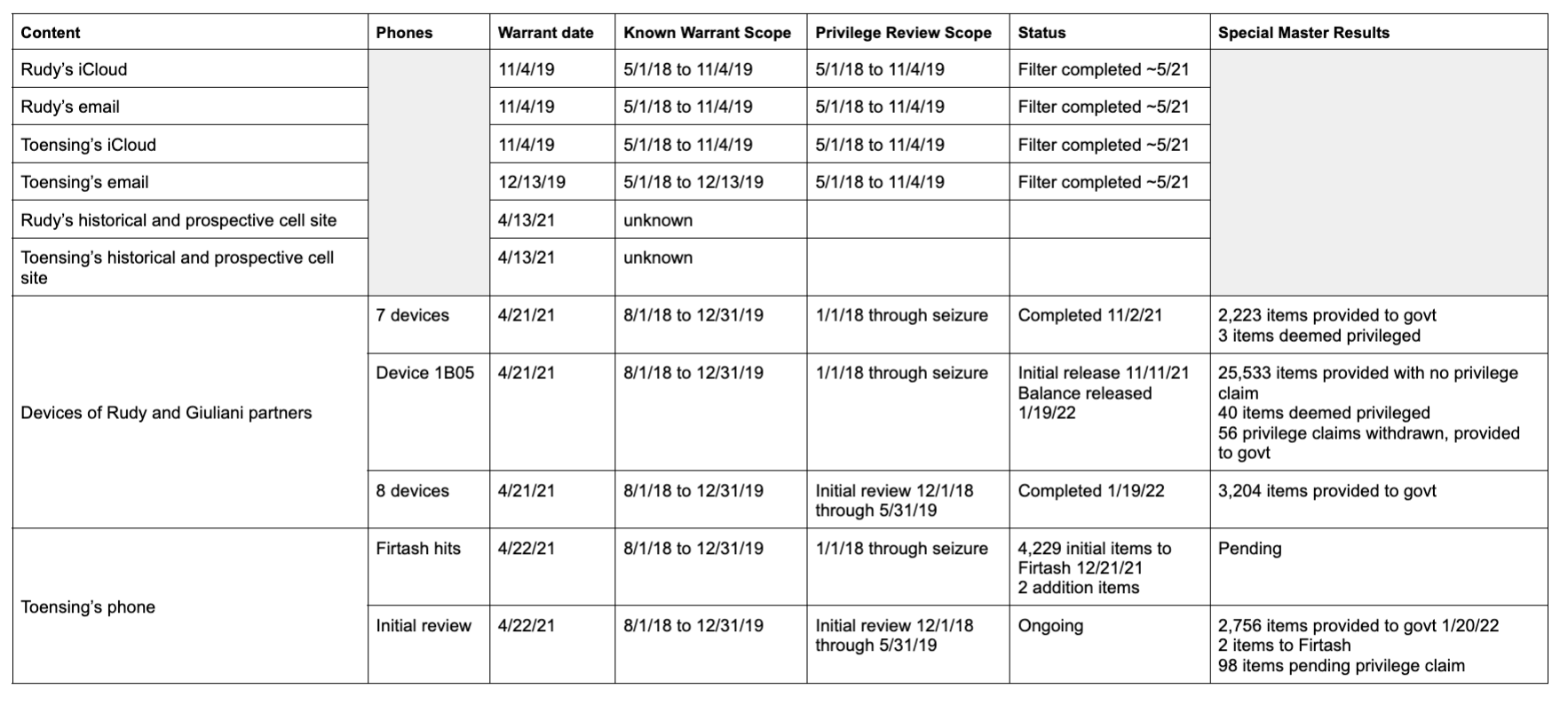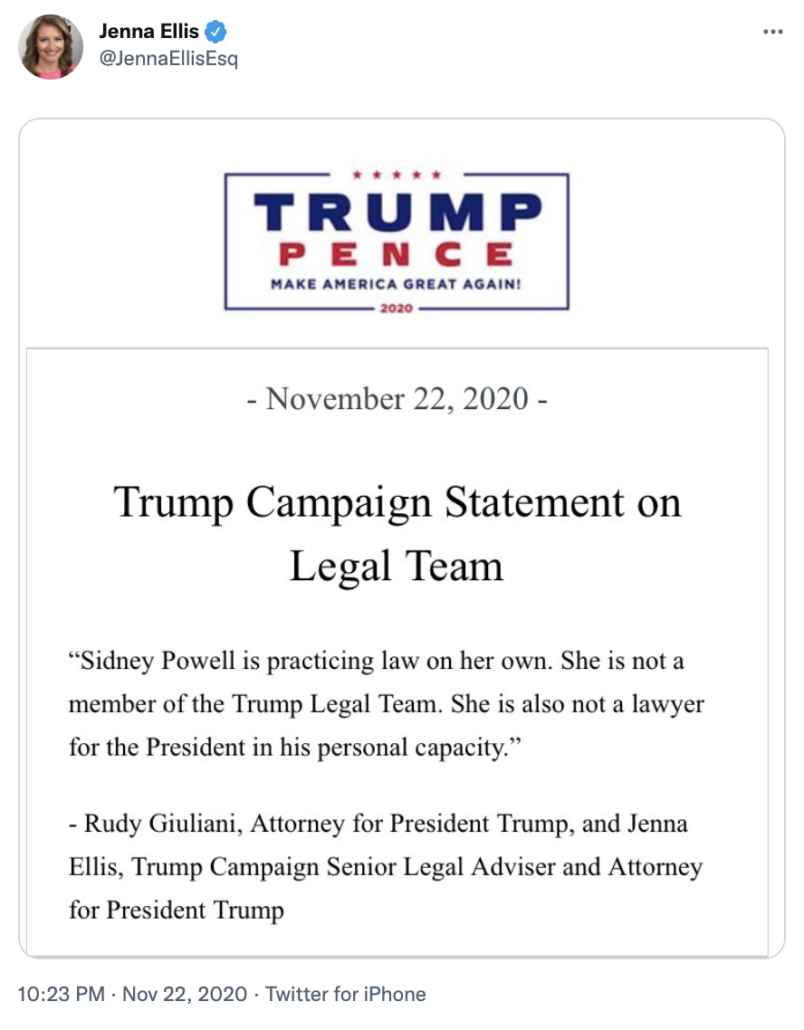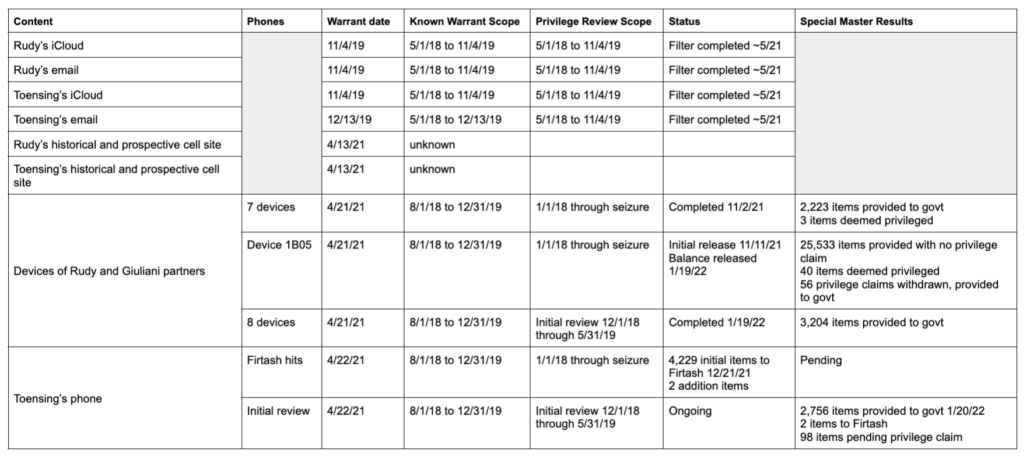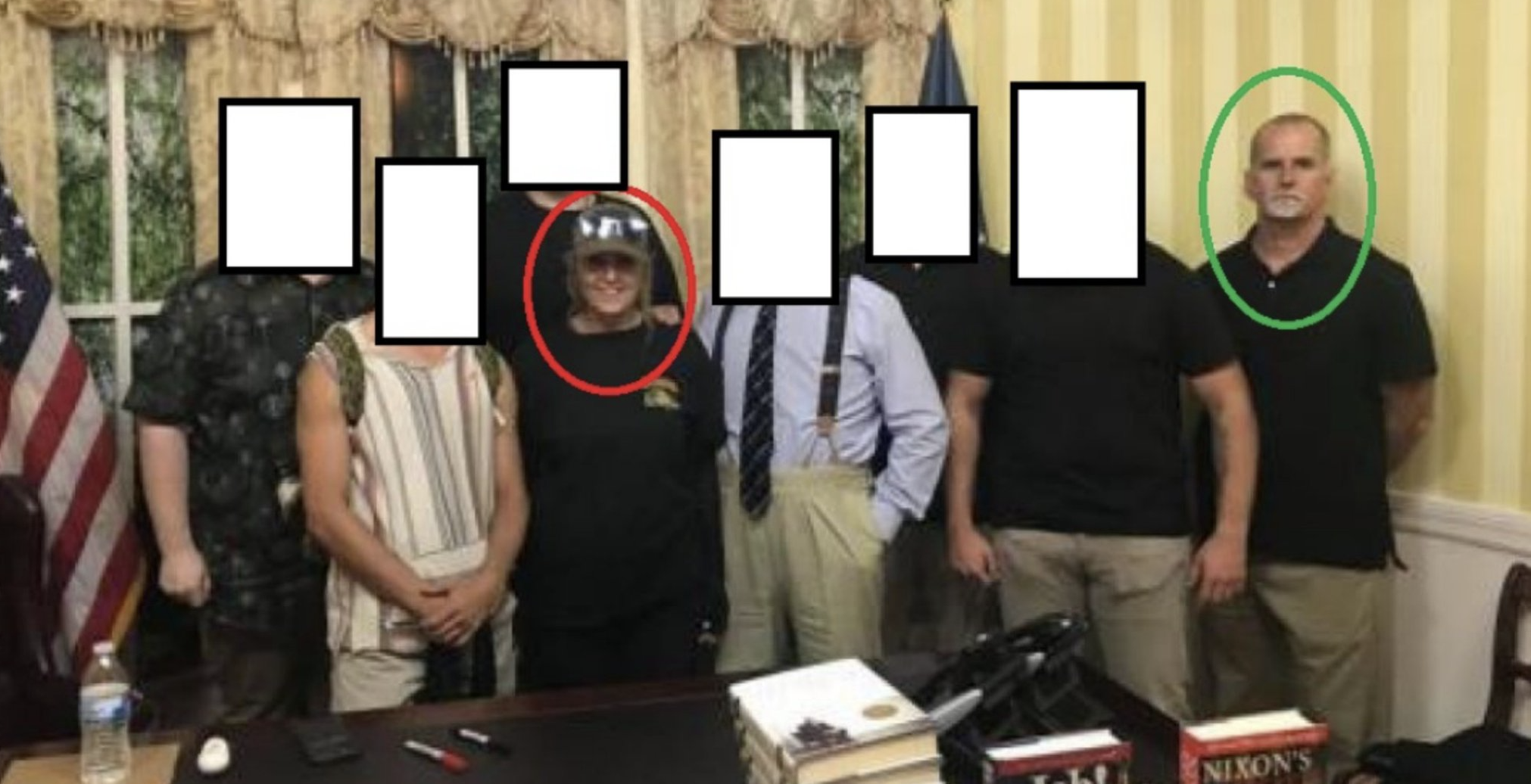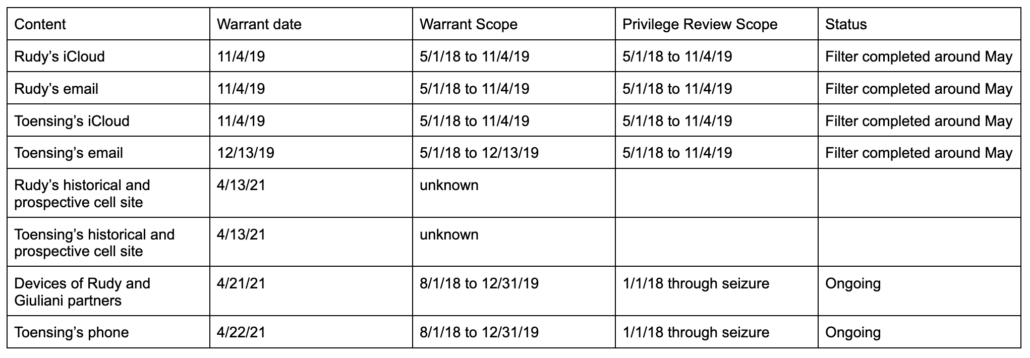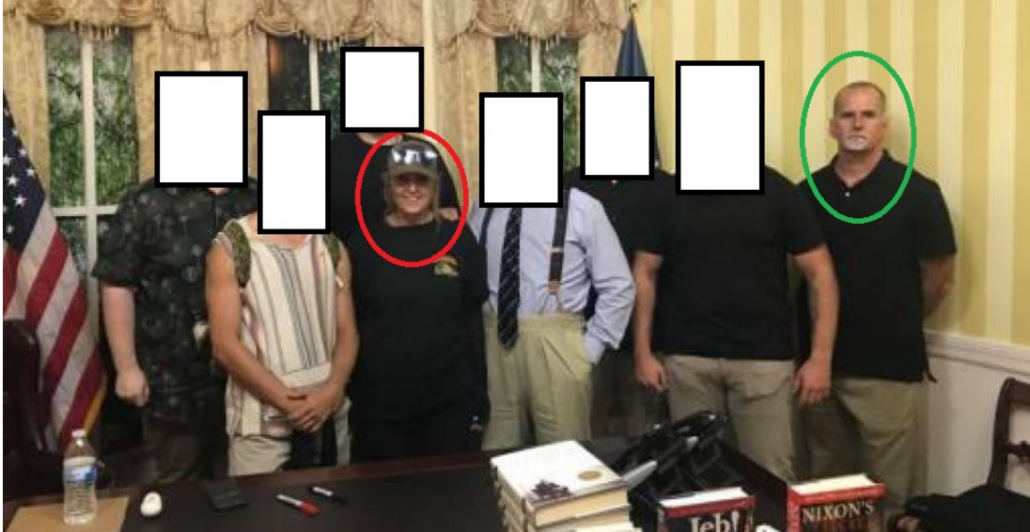When Lawyers’ Lawyers Need Lawyers: The Import of Robert Costello’s Toll Records — for Bannon, for Rudy, and for Donald Trump
As I explained in this piece, the lawyer who represents both Rudy Giuliani and Steve Bannon — and who has been at the center of Trump’s pardon-dangling for almost three years — had two meetings with the Bannon prosecution team, where he made a number of claims that could not all be true. The first meeting Robert Costello had with DOJ was on November 3, with a follow-up on November 8, 2021.
Just two of the sets of mutually contradictory claims Costello made in his first interview are:
COSTELLO had not had communication with attorneys for TRUMP prior to that date. [October 18, 2021, when Trump filed a lawsuit challenging Executive Privilege waivers for the January 6 Committee]
And,
COSTELLO first had contact with [Attorney for Donald Trump Justin] CLARK on approximately October 4 or October 5, 2021.
Or:
COSTELLO did not discuss disposing of any documents requested in the Select Committee subpoena with any attorneys who represented former President TRUMP.
And,
Even though MICHAEL FLYNN was not an attorney, he was present during attorney-client-protected discussions. Those particular attorneys represented former President TRUMP and CLARK informed COSTELLO not to respond to item 17.
I would imagine there’s no better way to get the FBI to start investigating you for false statements then by making a bunch of mutually contradictory claims in one interview.
There were certainly other claims Costello made which he should have known to be false. For example, given that his other client, Rudy Giuliani, put out a statement asserting that Sidney Powell did not work for Trump, Costello likely knows that Powell’s presence at a meeting, along with non-lawyer Mike Flynn, would not implicate Trump’s privilege, even if a meeting between Costello client Bannon and Costello client Rudy could itself be considered privileged, which is a fantastic stretch in any case. But that’s a claim, he told the FBI, that he advised Bannon to make in refusing to respond to the January 6 subpoena by invoking Executive Privilege.
Nevertheless, the FBI did not have to obtain the content of Costello’s communications to test whether he lied at that meeting on November 3, given that so many of his fact claims could be tested simply by obtaining his call and email records to see whether he was speaking with Trump lawyers (and those for Mark Meadows, Dan Scavino, and Kash Patel) and if so, when, about which Costello made affirmative denials in his meeting with DOJ. If he was discussing with other lawyers how to deal with the Select Committee investigation at a time he claimed he was not, the FBI would have deemed that a suspected lie worthy of more investigation.
And that’s what the FBI did, making eight requests for records (four for phone records, four for Internet records, apparently covering his work and personal emails and phones) resulting in 790 pages, total.
Given the abundant detail included in the Motion to Compel (undoubtedly included to provide hypothetical co-conspirators some idea of the extent of the record seizure, including that no content was obtained), Bannon’s claims seem to be predictably overblown. There appear to be three grand jury subpoenas and just one 2703(d) order (to an Internet provider, likely someone like Google). That is, some of the eight requests appear to be an effort to figure out which phones and email were of interest, in advance of obtaining toll record themselves. Indeed, Bannon makes much out of the fact that DOJ obtained payment method associated with Costello’s phone, available with a basic subscriber request. And unless Costello is a remarkably stingy user of SMS texting, the request for those toll records appears to be narrowly tailored either by time or interlocutor; there are just two pages of SMS text toll records.
Here’s a summary of what the government appears to have obtained:
Bates stamp range: US 001093-001883
US 001093: Grand jury subpoena
US 001145-001768: 623-page return from Internet provider showing IP activity, status (read or unread, inbox, etc.) and other details concerning emails and other activity offered by the carrier obtained with a Section 2703(d) Order on November 11, 2021 [US 001733] that includes a case number [US 001732-001735] and returned on December 7, 2021. Returns include:
- US 001151-001249: 98 pages showing IP activity for the email account sought from March 5, 2021 through November 12, 2021, as well as a report on what other services from the provider Costello uses
- US 001733, 001735, 001740, and 001742: Several references to a 2703(d) order or equivalent
- US 001765: Grand jury subpoena
US 001769-001789: Costello’s 302s
US 001834: Case number
US 001842: Case number
US 001863: Subscriber record showing payment method for Costello’s cell phone
US 001866: Costello’s data usage
US 001872; Grand jury subpoena
US 001874-001875: SMS (text messaging) information, including the numbers to which texts were sent and from which they were received
The government doesn’t appear to be treating these records as evidence in their contempt case against Bannon. As the Bannon filing notes, the government only turned them over on January 4, after stating (before they had obtained the bulk of these records) that the evidence in their case-in-chief against Bannon only consisted of 200 documents.
It is curious that Government counsel delayed producing these documents until January 4, 2022. On November 18, 2021, the parties appeared before this Court. At that proceeding, Government counsel insisted that the Government was ready for trial, that this is a simple and straightforward case, and that it was ready immediately to provide Mr. Bannon with the discovery in the case, which it described as “less than 200 documents,” with “most of” it purportedly comprised of “materials the defendant already has ….” [11/18/2021 Hearing Tr. at 3].
Costello first joined Bannon’s criminal defense team over two weeks after Bannon was indicted, and after DOJ pointed out that Costello’s representation would pose a problem for any Advice of Counsel defense. Given that DOJ obtained toll records from Costello’s firm, it’s possible they tipped him off and he joined the Bannon team to create this problem after that.
Bannon’s filing also notes that the government hasn’t provided the subpoenas obtaining this material, as they would have if the subpoenas targeted him, personally.
Nowhere in the Government’s production was a copy of a court order authorizing the Government’s actions, nor was there a copy of any subpoena for the records, nor was there even any application for a court order or for authorization from the Department of Justice for subpoenas intended to obtain defense counsel’s personal and professional telephone and email records.
That makes sense: Bannon can’t be held responsible for the things his (and Rudy’s) lawyer says while sitting with the FBI. Costello is the one who made mutually contradictory claims, not Bannon.
But, at least as Bannon tells it, the team that seized these records appears to have taken little care to protect Costello’s other clients.
Furthermore, there was nothing in the production that indicated any effort to limit the access of the prosecutors assigned to this case to defense counsel’s personal and professional records, nor was there any indication of any filter in place to distinguish between attorney-client privileged or work-product privileged information that could be garnered from the records the Government obtained and non-privileged materials, nor was there any indication of any filter intended to protect confidential and privileged related to other clients of Mr. Costello and his law firm or intended to keep the prosecutors handling this case from access to any such privileged material.
Indeed, after wailing a bit about DOJ’s oblique response when asked about this seizure, the Bannon filing returned to Costello’s other clients and “witnesses” consulted in those representations.
Beyond all of the above, the Government’s response ignores the damage its actions risked causing for other clients of Mr. Costello and his law firm, for telephone calls and emails to and from other clients and witnesses consulted in relation to their cases would now be exposed by the Government’s efforts to obtain records for all of the attorney’s emails and telephone records.
And in fact, in a letter responding to Bannon’s questions about these records, DOJ made no representations about work product related to Costello’s other clients, even while emphasizing what the prosecution team (which is different from DOJ as a whole) has in its possession.
Aside from the information that Mr. Costello voluntarily disclosed on behalf of Mr. Bannon during the investigation of this matter, the Government has not taken any steps to obtain any attorney work product relating to any attorney’s representation of Mr. Bannon or to obtain any confidential communications between Mr. Bannon, Mr. Costello, and Mr. Katz, or between Mr. Bannon and any other attorneys.
We have provided all discoverable material in the prosecution team’s possession, custody, or control relating to Mr. Costello’s and Mr. Katz’s involvement in the conduct charged in the Indictment. The Government understands its discovery obligations under Federal Rule of Criminal Procedure 16; the Jencks Act; and Brady, Giglio, and their progeny, and will continue to comply with them should additional discoverable material come into the prosecution team’s possession, custody, or control.
That’s significant because of the temporal scope of the email metadata obtained: from March 5 through November 12, 2021, basically the last event for which Costello was representing Bannon in the Build the Wall criminal prosecution and his indictment on these new charges (though, again, Costello didn’t join his defense team for over two weeks). These records don’t include any period when Costello was criminally representing Bannon.
But they do cover a far broader period than would be necessary to understand what communications Costello had with lawyers for Donald Trump after Bannon was subpoenaed by the January 6 committee on September 23. Indeed, they cover a broader period than the entire January 6 Committee, which was created by House Resolution 503 on June 30, 2021.
Presumably, DOJ saw something in the initial records they were seeking — or in records obtained by others, or in another unseen ongoing investigation — to scope the Internet request for the entirety of the period between Costello’s past and current criminal representation of Bannon. Or they were already interested in Costello (for whom there was a possible referral in the Mueller investigation), and his interview with the FBI extended that interest.
That suggests this really isn’t about Bannon.
But the seized records do include the entirety of the period when Costello was helping Rudy review the contents of 16 devices seized by SDNY. Of note, Trump could have, but chose not to participate in that Special Master process. Because he moved to intervene, Dmitry Firtash is permitted to review the records seized from Victoria Toensing to protect his own interests, but Trump’s lawyers should not be getting notice of what was seized from Rudy.
Indeed, the conversations of interest regarding the Bannon representation happen to have taken place during a period during which Costello had gotten an extension to review the contents of the first seven devices seized from Rudy.
On September 28, 2021, I directed that Mr. Giuliani complete his review of the data contained on seven of these devices by October 6, 2021, which was later extended to October 12, 2021. These seven devices contain 2,226 items in total dated on or after January 1, 2018. Mr. Giuliani designated 3 items as privileged, and I am reserving decision on those 3 items. The remaining 2,223 items have been released to the Government.
Costello told the FBI he had no conversations with any Trump lawyers for this period. Even if he had conversations with other Trump lawyers during this review problem, it would conflict with what he told the FBI in his Bannon-related meeting.
It’s certainly possible that the only warrants at issue in the Special Master review are the Ukraine-related ones overtly used to seize Rudy’s devices, and that the SDNY team is completely excluded from accessing these records; if that’s the case, it would suggest there’s no investigation into Rudy out of DC, particularly not one in which JP Cooney or Molly Gaston are participating, both senior prosecutors at DC USAO.
Or there’s something far more interesting going on.
Update: I realized after I posted this that Costello’s 302s were included in the 790 pages Bannon complained about, meaning he claimed things were call records when instead they were the obvious justification for the call records. I’ve added and bolded those pages above.

